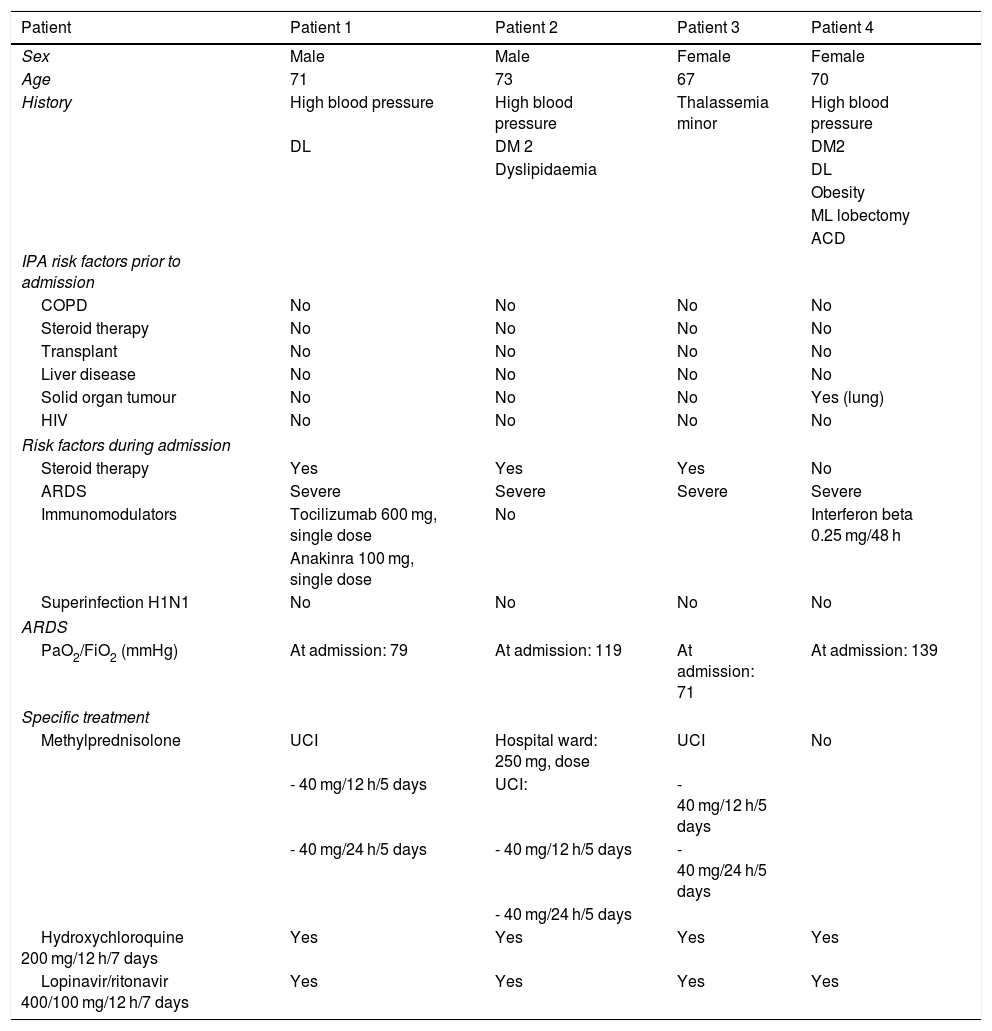Patients with COVID-19 who are admitted to intensive care unit (ICU) are at high risk of developing secondary infections, including invasive fungal infections such as invasive pulmonary aspergillosis (IPA). The main purpose was to analyse the putative COVID-19 Associated Pulmonary Aspergillosis (CAPA) patients in our setting. In these patients, we performed mycological culture in bronchoalveolar lavage (BAL) for isolation of Aspergillus sp. We followed the AspICU algorithm to diagnose putative IPA. Moreover, we considered relevant the positivity of Galactomannan in BAL. We diagnosed putative IPA in 3 patients. The common features of these 3 patients were: more than 21 days of stay in ICU, severe acute respiratory distress syndrome (ARDS) and treatment with steroids (1 mg/kg per day). Therefore, CAPA has to be systematically considered although a new algorithm to diagnose it is needed to treat patients in early stages in order to avoid catastrophic outcomes.
Los pacientes con COVID-19 que ingresan en una unidad de cuidados intensivos (UCI), tienen un alto riesgo de desarrollar infecciones secundarias, incluyendo infecciones fúngicas invasivas como Aspergilosis pulmonar invasiva (API). El objetivo principal fue el análisis de los casos con sospecha de COVID-19 Associated Pulmonary Aspergillosis (CAPA) en nuestra unidad. En estos pacientes realizamos cultivo micológico en el lavado broncoalveolar como métodos de aislamiento de Aspergillus sp. Se siguió el algoritmo AspICU para establecer el diagnóstico de API probable. Además, considerando también relevante la positividad de antígeno de Galactomanano. Se confirmó API probable en 3 de ellos. Los tres pacientes permanecieron ingresados más de 21 días por SDRA grave y recibieron corticoterapia (1 mg/kg/día). Por tanto, la CAPA se debe considerar de forma sistemática, aunque se necesita un nuevo algoritmo diagnóstico que permita tratamiento precoz por las consecuencias deletéreas que puede implicar en los pacientes críticos.








